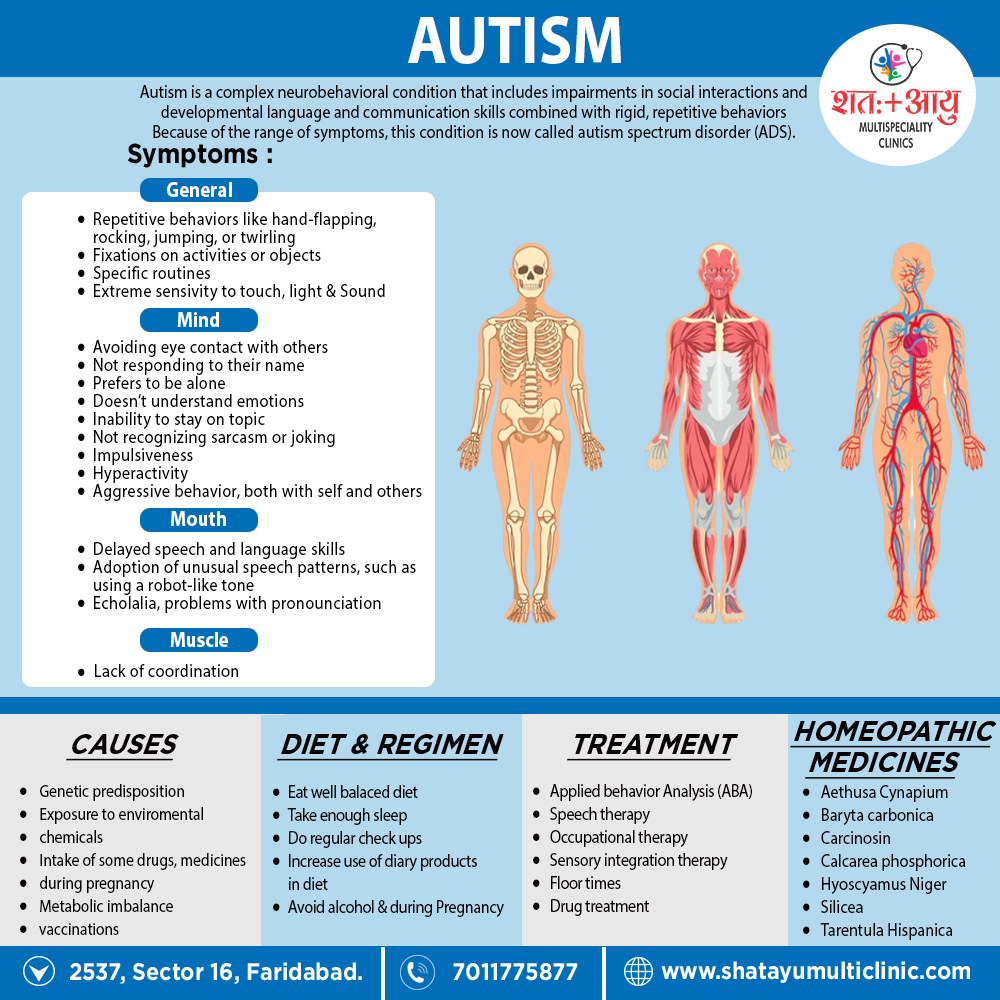Doctors typically diagnose autism spectrum disorder (ASD) in childhood when symptoms can occur before 3 years of age, according to the American Autism Association.
According to the Centers for Disease Control, autism affects an estimated 1 in 59 children in the United States today. [2]
The word “autism” comes from the Greek word “autos,” which means “self.” It describes conditions in which a person is removed from social interaction. In other words, he becomes an “isolated self.”
Symptom covered in ASD:
It covers a large spectrum of symptoms, skills, and levels of impairment. ASD ranges in severity from a disability that somewhat limits an otherwise normal life to a devastating disability that may require institutional care. [1]
While different types of ASD occur, common experiences among people with the condition include impairment in social situations and the adoption of repetitive behaviors.
Some children with autism might seem to show symptoms from birth, while others may develop more obvious signs as they become older.
Autism also has links to other medical conditions, such as epilepsy and tuberous sclerosis complex.
According to the National Institute of Neurological Disorders and Stroke (NINDS), an estimated 20 to 30 percent of people with ASD develop epilepsy by the time they reach childhood. [2]

